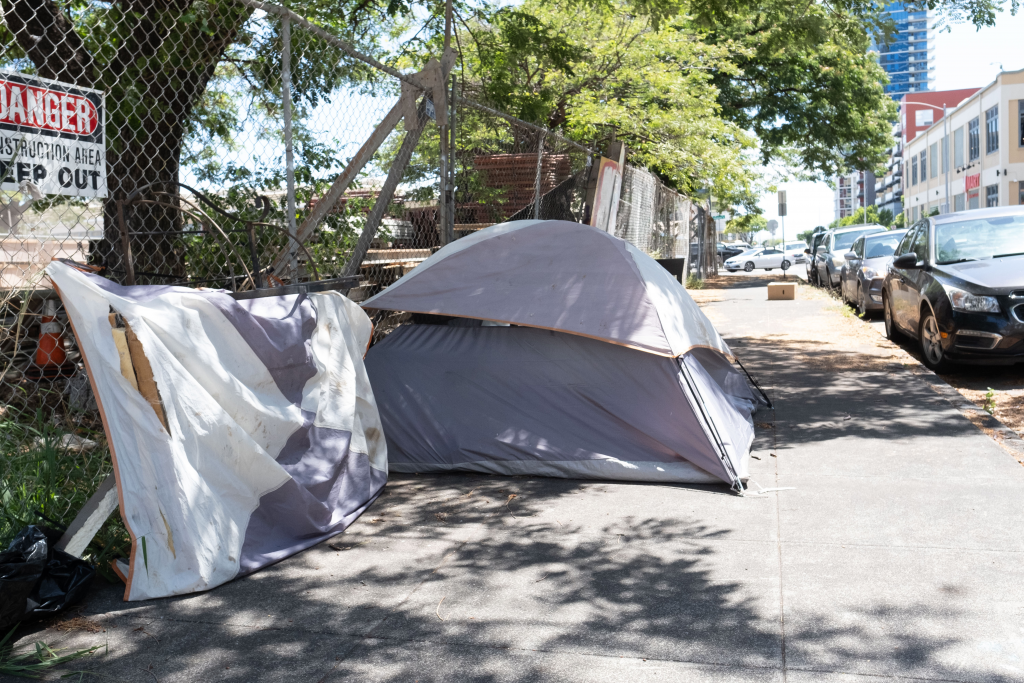AARP Study on homelessness estimates that 2,352 are kupuna

A new AARP analysis of homelessness and eviction data estimates that there are 2,352 homeless kupuna age 45 and older in 2022, and that this year will see 1,820 Hawaiʻi residents in that age group evicted from their homes.
The total number of homeless adults statewide is 5,116 and evictions for 2022 are estimated at 3,906, according to the Statista/AARP analysis of data available by the US Census Bureau.
Estimates of homelessness and evictions by county and race showed that the number of homeless adults and evictions for each county fall in order of each island’s population.
- In 2022, Honolulu, the county with the most people, is expected to see 2,970 evictions of adults 18 and older. In 2022, Oʻahu also has the most estimated homeless adults with 3,932.
- Hawaiʻi Island follows with 429 evictions expected, and an estimated 536 homeless adults.
- Maui is next with 355 evictions expected, and 463 homeless individuals 18 and older.
- Kauaʻi has the least projected amount of evictions expected at 145, and has an estimated 175 homeless adults.
ARTICLE CONTINUES BELOW ADARTICLE CONTINUES BELOW AD“The data above provides evidence that we need to address the housing problem through various legislative remedies, including increasing housing supply and options, zoning reforms, and funding affordable housing.”
Samar Jha, AARP Government Affairs Director
Jha is in Hawaiʻi to present the Statista/AARP analysis at an affordable housing conference this week.
“The lack of affordable housing in Hawaiʻi affects all of us and is obviously a factor in homelessness,” said Kealiʻi Lopez, AARP Hawaiʻi State Director. “AARP Hawaiʻi believes we need to come together and find common ground and solutions to increase affordable housing options. It’s our top priority this year.”
The analysis covers a nine-year period beginning in 2019 and projects evictions and homelessness into 2027. The estimates show a sharp rise in evictions and homelessness toward the end of the pandemic, peaking this year and gradually decreasing through 2026.
“It’s clear that evictions and homelessness are intertwined,” Jha said. “The pandemic was likely a big factor and contributed to the number of people experiencing homelessness in 2021 and 2022. A number of factors will contribute to a decline in evictions and homelessness in the coming years, including inflation, the economy, and government action to address affordable housing and other factors contributing to homelessness. Predicting the future is a tricky business, but efforts to increase the stock of affordable housing, zoning reforms, and easing of housing affordability, can make a positive impact on decreasing the number of people being evicted or experiencing homelessness.”
Other findings:
- Evictions and homelessness disproportionately affect adults 44 and younger and 65 and older than adults 45 to 64.
- Asians (1,676), followed by Whites (1,339) and people of mixed race (905) make up the majority of homeless in Hawai`i.
- Oʻahu has the greatest per-capita homeless population with 49 per 10,000 resident homeless.
- Of the Neighbor Islands, Maui has 34 per 10,000 homeless residents, followed by Hawaiʻi County with 33 and Kauai with 30.










